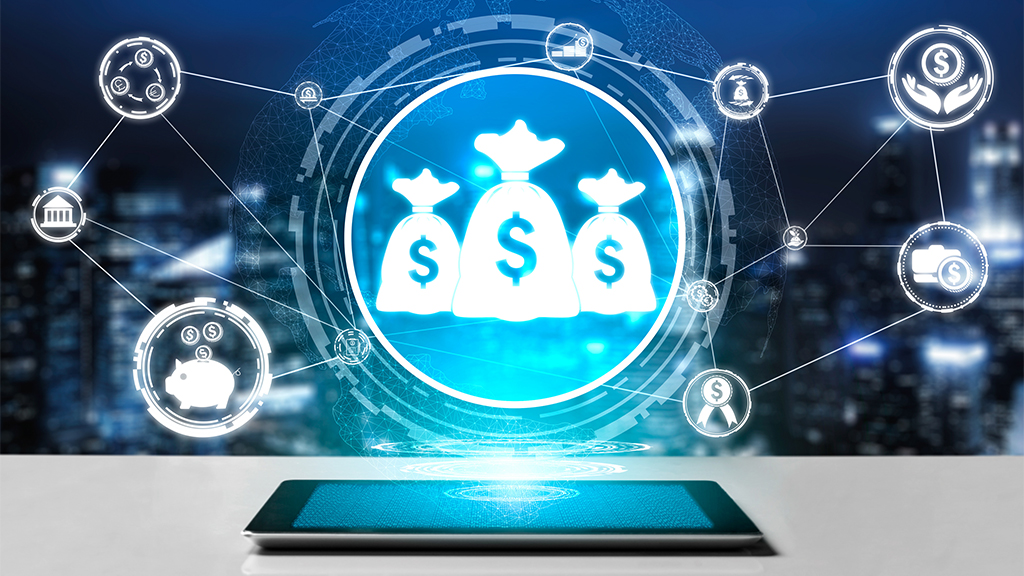The retail industry has significantly transformed in recent years due to rapid digital advancements. This shift has revolutionized how retailers operate, interact with customers, and manage their businesses. The Digital Transformation Market size is expected to grow from USD 1,697.91 billion in 2023 to USD 4,462.49 billion by 2028, at a CAGR of 21.32% during the forecast period (2023-2028), highlighting the tremendous growth potential in this transformative journey.
The evident benefits of digital transformation in retail have encouraged retailers to keep up with the latest trends to stay relevant. As a result, they have been able to revolutionize their retail operations, customer engagement, and business management, enable personalized experiences, generate data-driven insights, and optimize supply chains.
Key drivers for digital transformation in the retail industry
The retail industry, valued at $7 trillion and employing 1.8 billion people globally, is witnessing a shift in traditional paradigms. Competitive pricing, convenience, and product variety are no longer enough to ensure customer loyalty.
Personalized communication and targeted marketing strategies are now crucial for customer retention and acquisition. By leveraging data and insights, retailers can enhance engagement, increase purchase frequency, and target high-value customers. Consequently, the demand for digital transformation in retail has surged, offering a direct path to revenue growth.
By understanding the forces behind digital transformation, organizations can prioritize investments, allocate resources effectively, and develop a clear roadmap for successful implementation. Some key drivers for digital transformation include:
- Changing consumer behavior: The shift towards e-commerce, mobile shopping, and social media has significantly influenced consumer expectations, prompting retailers to transform their operations to meet these demands.
- Technological advancements: Innovations such as artificial intelligence (AI), the Internet of Things (IoT), big data analytics and smart tools like Dynamics 365 retail provide retailers valuable insights, automation capabilities, and real-time data to optimize decision-making, enhance customer experiences, and drive growth.
- Competitive landscape: Digital disruptors and agile startups are challenging traditional retailers, pushing them to adopt digital strategies to remain competitive, capture market share, and differentiate themselves.
- Evolving customer expectations: Customers now seek seamless, personalized, and convenient shopping experiences, compelling retailers to embrace digital technologies to deliver tailored experiences, personalized recommendations, and interactive touchpoints.
- Adaptation to industry trends: Digital transformation allows retailers to stay ahead of industry trends, adopt new technologies, and embrace emerging opportunities such as omnichannel retail, social commerce, and virtual reality shopping experiences.
- Regulatory and compliance requirements: Digital transformation helps retailers navigate complex regulatory and compliance landscapes, ensuring data privacy, security, and compliance with industry standards.
- Business agility and innovation: Digital transformation enables retailers to be agile, responsive, and innovative in their operations, allowing them to quickly adapt to market changes, experiment with new business models, and launch new products and services.
Top 5 trends in digital transformation for retail to stay competitive in the modern landscape
By keeping pace with the current trends, retailers can enhance operational efficiency, improve customer engagement, and effectively leverage the benefits of digital transformation in retail. Some of the top trends in digital transformation in retail consist of the following:
1. Omnichannel retail
Retailers focus on providing a seamless and integrated shopping experience across multiple channels, including online, mobile, and physical stores. Statistics show that companies that implement omnichannel customer engagement strategies have been found to retain 89% of their customers, showcasing the effectiveness of such trends in customer retention.
This trend involves leveraging technology to unify customer touchpoints, enabling customers to browse, purchase, and return products through their preferred channels.
2. Personalization and customer experience
In 2022, the estimated value of the global personalization software market reached approximately $943 million.
With abundant data and advanced analytics capabilities, retailers leverage personalization to offer tailored recommendations, customized promotions, and personalized shopping experiences. This trend aims to enhance customer satisfaction, engagement, and loyalty by understanding individual preferences and delivering relevant and meaningful interactions.
3. Mobile commerce and in-store technology
The proliferation of smartphones has led to the rise of mobile commerce, where retailers are optimizing their websites and applications for mobile devices to facilitate easy and convenient shopping on the go.
In 2023, it is projected that retail m-commerce sales will contribute to 43.4% of the overall retail e-commerce sales, an increase from 41.8% in 2022.
Additionally, retailers are embracing in-store technologies such as digital signage, smart shelves, and mobile payment options to enhance the in-store experience and bridge the gap between physical and digital channels.
4. Artificial intelligence and machine learning
AI and machine learning technologies are being utilized in various aspects of retail, including demand forecasting, inventory management, customer service chatbots, and personalized recommendations.
The global retail industry is expected to witness a significant growth in the demand for artificial intelligence technology, with a projected compound annual growth rate (CAGR) of 30.3% from 2023 to 2033.
These technologies enable retailers to automate processes, gain actionable insights from data, and deliver more efficient and personalized customer experiences.
5. Augmented reality and virtual reality
Retailers are exploring using augmented reality (AR) and virtual reality (VR) technologies to enhance the shopping experience. Studies show that AR product experiences provide a remarkable 200% increase in engagement compared to non-AR alternatives, delivering twice the level of engagement.
AR allows customers to visualize products in their environment before purchasing, while VR offers immersive experiences such as virtual try-on or store tours.












